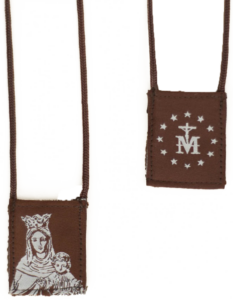In Auschwitz, he was just another prisoner, Prisoner 5659 to be exact. Before his capture, he was a sergeant in the Polish army who fought at Wieluń, Warsaw, and Modlin against the Nazis. Before that, he was a husband and the father of two sons. And before that, he was Franciszek Gajowniczek, a Roman Catholic growing up in Poland. But now, he was just Prisoner 5659 and he was being commanded to die.
In July of 1941, three prisoners escaped from the Auschwitz concentration camp in German-occupied Poland. As punishment to the other prisoners, the Deputy Commander of the camp ordered that ten random men be starved to death. An SS officer walked among the prisoners and began to select victims. He pointed to Gajowniczek, “You.”
Gajowniczek cried out, “My wife! My children!”
Then, from the crowd of half-dead prisoners, a man stepped forward: Prisoner 16670. Like most everyone else, he was dirty, malnourished, and covered in wounds. But unlike the others, he did not show fear or despair. He radiated peace, courage, and a holy defiance: Fr. Maximilian Kolbe.
“I am a Catholic priest. I would like to take his place because he has a wife and children,” he said.
Gajowniczek could hardly believe his ears. He was stunned into silence and could only thank Fr. Kolbe with his eyes. Gajowniczek was saved. Kolbe and the others were stripped and thrown into an underground bunker to starve to death. Kolbe spent his time in the bunker leading the other prisoners in prayer and preparing himself for death. After two weeks, only Kolbe and three others remained. The Nazis executed them by injecting them with carbolic acid.
After spending another three years in Auschwitz, Gajowniczek was transferred to Sachsenhausen. In February 1945, he and 33,000 other prisoners were ordered on a forced march northwest out of Oranienburg to escape the Allied forces. Only 3,400 prisoners survived this brutal journey, Gajowniczek among them. On April 22, 1945, the prisoners were freed by Belorussian and Polish forces, and Prisoner 5659 could finally go home.
Franciszek Gajowniczek reunited with his wife and lived for another 53 years, continuing to share Kolbe’s courageous act of sacrifice with the world. He was present at both the beatification (1971) and canonization (1982) of St. Maximilian Kolbe.
“Through the death which Christ underwent on the Cross, the redemption of the world was achieved, for this death has the value of supreme love. Through the death of Father Maximilian Kolbe, a shining sign of this love was renewed in our century which is so seriously and in so many ways threatened by sin and death.
…
Therefore let us today glorify God’s great work in man. Before all of us gathered here, Father Maximilian Kolbe lifts up his ‘cup of salvation.’ In it is contained the sacrifice of his whole life, sealed with the martyr’s death ‘for a brother.’
Maximilian prepared for this definitive sacrifice by following Christ from the first years of his life in Poland. From these years comes the mysterious vision of two crowns — one white and one red. From these our saint does not choose. He accepts them both. From the years of his youth, in fact, Maximilian was filled with the great love of Christ and the desire for martyrdom.” (Pope St. John Paul II, Homily for the Canonization of St. Maximilian Maria Kolbe)
Precious in the sight of the Lord is the death of his saints.
SPECIAL PREMIUM $365 LEVEL – Saint Maximilian Kolbe Book by Fr. Jeremiah J. Smith, O.F.M. CONV. + 17″ Brown Scapular, Our Lady of Mt. Carmel
While living in a world at war in a conquered country, a saintly priest had another conquering in mind: that of the world, for the glory of Christ. This written biography covers the life of St. Maximilian Kolbe from the heart of his love for the Lord and His Mother all the way to his heroic sacrifice in Auschwitz. In reading this consequential work, you’ll find your heart full of zeal to evangelize as he did!




